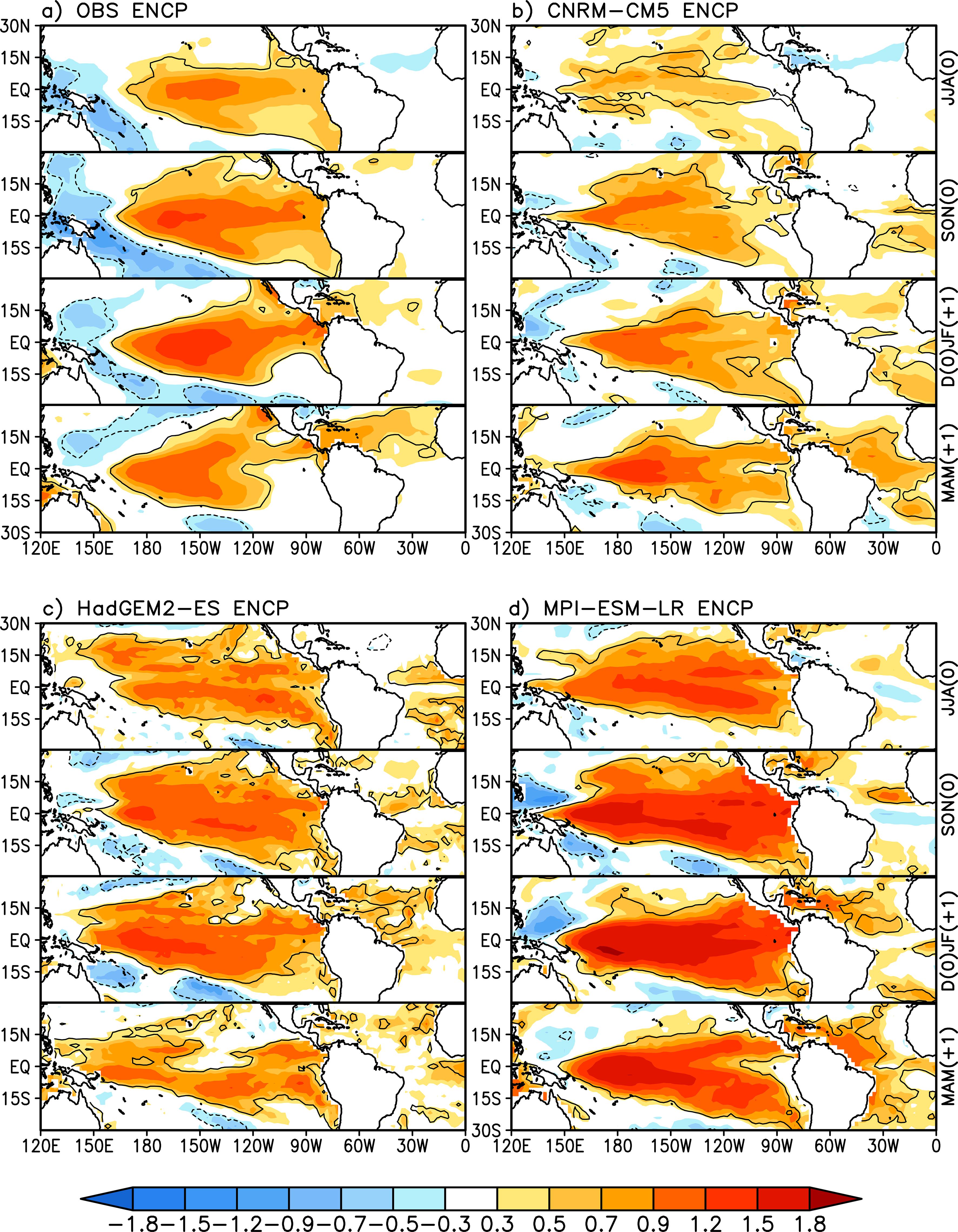Abstract
Recent studies have pointed out to the existence of two El Niño (EN) types: Eastern Pacific or Canonical (EP) EN and Central Pacific or Modoki (CP) EN. In the present study, the observed and simulated data in three models of the Coupled Model Intercomparison Project phase 5 (CMIP5) were used to evaluate the impacts of two EN types on the South American precipitation from June-August of the EN onset year to March-May of the following year. The Centre National de Recherches Météorologiques (CNRM-CM5) model presented a better performance in reproducing the observed SST anomaly patterns for the CP and EP EN types. The observed precipitation anomaly pattern associated with the EN events was better represented during the austral summer. In the case of the EP EN, such pattern features wetness (dryness) in southeastern (northern-northwestern) South America. The CNRM-CM5 and Hadley Centre Global Environmental Model (HadGEM2-ES) models reproduced this pattern. The Max Planck Institute Earth System Model (MPI-ESM-LR) model reproduced the dryness over northern, but not the rainfall increasing in southeastern and the rainfall reduction in northwestern of the continent. In the case of the CP EN, the observed impact on the South American rainfall during the austral summer featured rainfall scarcity (excess) in northern and northwestern (southeastern) South America. The models reproduced this pattern, however, the HadGEM2-ES and MPI-ESM-LR models showed lower rainfall over northeastern Brazil than the observed one. The EN teleconnection differences explain the differences of the simulated patterns.
Keywords:
El Niño types; climate models; South America












